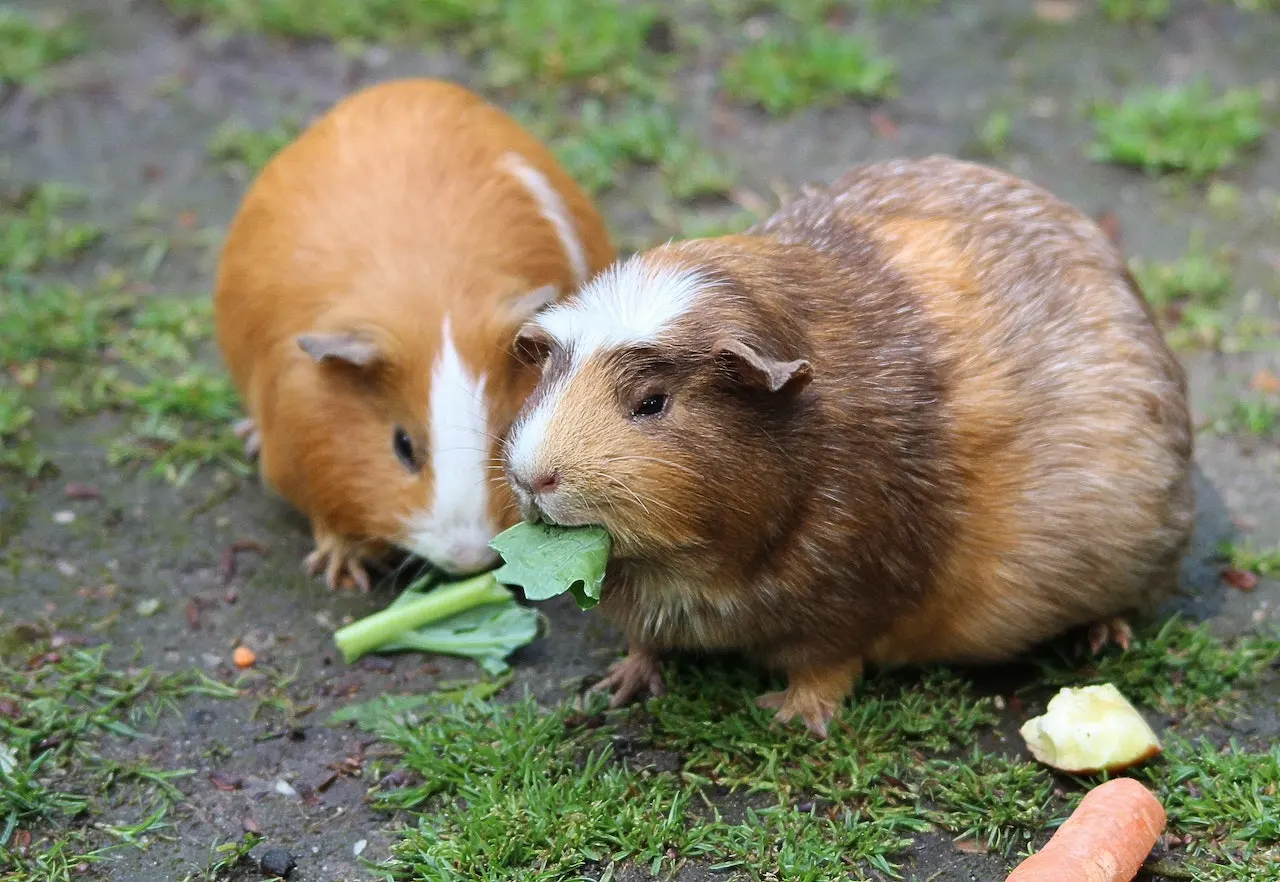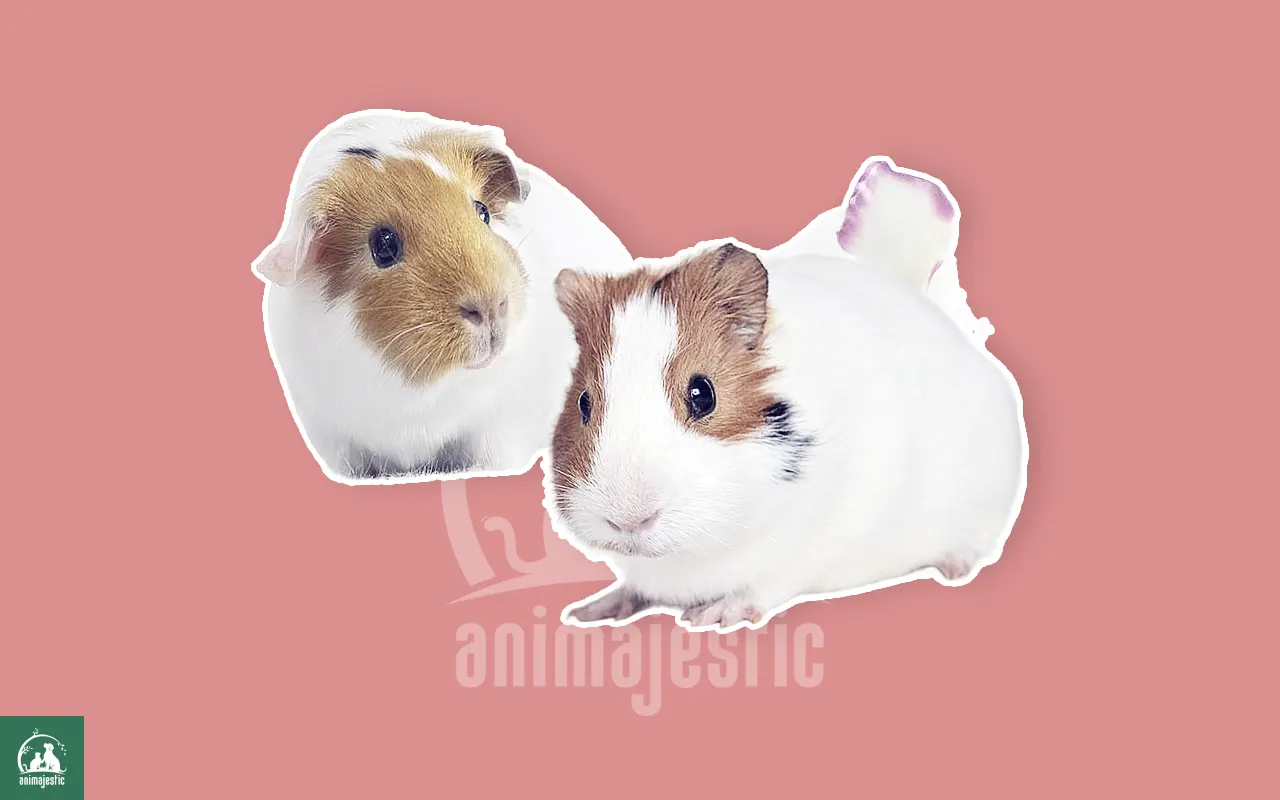The world of pets is an extensive one that goes far beyond dogs, cats, and goldfish. Among the array of animals that are available for pet owners, guinea pigs, also known as cavies have firmly carved out a place for themselves.
Hailing from South America, these cuddly creatures have endeared themselves to numerous homes worldwide due to their sociable nature and relatively modest living requirements.
The general view of guinea pigs as pets is around their friendly, social behaviors. They are also known for various coat types, colors, and patterns, and each has a unique personality.
While these lovely creatures are generally simple to care for, would-be owners should ensure they understand the many aspects of maintaining healthy, happy guinea pigs.
About This Specie
Family: Caviidae Cavia porcellus
Specie: Cavia porcellus
Class: Mammalia
Length: 8 and 10 inches (Adult)
Lifespan: 5 – 7 years
Weight: 1 to 2.5 pounds Conservation status
Conservation status: Domesticated
The Sweet Life of Guinea Pigs as Pets
Originally raised in the Andean region, guinea pigs have transformed from being primarily a food source to delightful pets adored around the world.
They have an average lifespan of 5 to 7 years and love social interaction, making them ideally suited for families and first-time pet owners. But with good genes and excellent care, some have been known to live up to 10 years.
With over a dozen types and colors to choose from, finding the perfect furry companion can be incredibly exciting.
Despite their small size, guinea pigs have big personalities. They’re famous for their friendly, docile nature and sociability. Unlike some pets that prefer solitude, guinea pigs thrive on companionship both from their human companions and other guinea pigs.
Communication is a cornerstone of guinea pig life. These adorable creatures communicate through a series of vocalizations to articulate different moods or needs.
Purring, for instance, could indicate a calm and comfortable cavy, while “wheeking” (a sound exclusive to guinea pigs) could be a sign of anticipation or excitement.

So Why Do Guinea Pigs Make Great Pets?
- Social: Guinea pigs enjoy the company of humans and their own kind. They’re happiest when interacting with their owners or living with other guinea pigs.
- Gentle: Guinea pigs are known for their gentle nature, making them suitable pets for families with kids.
- Vocal: They have a wide range of vocalizations, communicating everything from excitement to annoyance, offering a unique bonding experience with their owners.
- Low maintenance: Compared to other pets, like dogs and cats, guinea pigs are relatively low maintenance.
Choosing the Ideal Guinea Pig
To pick your future pet, evaluate their physical and mental well-being by observing the following:
- Age and Size: Younger guinea pigs adapt more easily but need attentive care, while adults are less demanding and display well-developed personalities.
- Breed: Consider the traits of various breeds, such as fur colors and grooming requirements.
- Health: A healthy guinea pig should have bright eyes, clean ears and nose, and a lush coat. Avoid those with matted fur or discharge from the eyes or nose.
- Personality: Allow your prospective pet to acclimate to your presence and observe whether it is outgoing or timid.
Comfortable Living Environment
Your guinea pig will thrive in a sizable, well-ventilated enclosure complete with:
- Cage size: The size and layout of your guinea pig’s cage significantly impact their well-being. To ensure their happiness, experts within the Humane Society recommend a living space measuring at least 7.5 square feet of space for a single guinea pig and a minimum of 10.5 square feet for a pair, and in instances where guinea pigs cohabitate, their space should increase by about 2-4 square feet for each additional cavy.
- Bedding: Selecting the right bedding is great for their comfort, cleanliness, and overall health. Use 2-3 inches of paper-based bedding or aspen shavings and fleece cloths, such as Carefresh or Yesterday’s News.
Avoid toxic materials like cedar and pine shavings, as the aromatic oils within them can harm a guinea pig’s respiratory system. The ideal choice would be an absorbent, dust-free, and odor-limiting material. - Hiding and Sleeping Spots: Guinea pigs need hiding spaces to feel safe and secure, so provide 1-2 hideouts per guinea pig. Offer enclosed spaces, such as small boxes or commercially available hideaways, for resting and shelter.
- Cleanliness: Clean the cage at least once a week and spot clean daily to remove any build-up of feces or wet spots. This also helps to minimize ammonia buildup and bacterial growth.
- Toys: Stimulate and entertain your guinea pigs with chew toys, tunnels, and cardboard boxes.
- Feeding and Watering Accessories: Use a stable water bottle and heavy ceramic food and water dishes to prevent spills.
Diet and Nutrition
A guinea pig has specific dietary requirements, so follow these guidelines:
- Hay: Guinea pigs need a constant supply of fresh hay, such as high-quality timothy or orchard grass. Hay is essential for maintaining good dental health and a healthy digestive system. Ensure a continuous supply of hay as it plays a crucial role in guinea pigs’ nutrition.
- Pellets: Provide your guinea pig with a daily (⅛ cup) serving of high-quality pellets made specifically for guinea pigs. The pellets should include vitamin C, as guinea pigs cannot produce it on their own. Steer clear of those with additives, such as seeds and nuts.
- Fresh vegetables: Offering a variety of fresh veggies such as bell peppers, romaine lettuce, cucumber, and carrots daily can be a delightful addition, supplementing their diet with a myriad of flavors and nutritional benefits.
- Fruits: Fruits should be given less frequently as they are high in sugar content, and can given as occasional treats. Avoid feeding your Guinea pigs with fruits that have high sugar content. An example is blueberries.
- Water: Make sure your guinea pig has access to fresh water at all times, provided through a drip-proof water bottle. Replace drinking water daily, ensuring continuous availability.
Handling, Excercise, and Bonding
Guinea pigs are social animals that benefit from interaction and activity and they demand consistent oversight, including:
- Gradual approach: Let your guinea pig get used to your presence by speaking to them softly and offering treats by hand.
- Supporting their body: When picking them up, place one hand under their chest, and use your other hand to support their hindquarters as this gives them a sense of security.
- Holding close: Hold your guinea pig close to your body to help them feel secure.
- Interaction: Spend time interacting with your guinea pig daily, either through gentle petting or playtime outside the cage. Approach them gently, using soft-spoken words and offering treats to establish trust.
- Guinea Pig Companions: Multiple guinea pigs create a more stimulating habitat, but females or neutered males are best suited for cohabitation.
- Supervised Floor Time: Allocate daily exercise time outside of their enclosure, in a secure and guinea pig-proof area.
- Handling: Guinea pigs enjoy interacting with their owners, but handle them gently to avoid injury.
Health and Grooming
Tips for maintaining a clean and healthy pet:
- Routine Health Assessments: Conduct a whole-body check regularly, looking for lumps, wounds, or unusual signs.
- Nail trimming: Trim your guinea pig’s nails every 2-4 weeks, depending on their growth rate.
- Dental Monitoring: Monitor your guinea pig’s teeth to ensure they do not become overgrown or misaligned, which requires professional trimming to remedy. Providing hay and chew toys helps maintain good dental health.
- Grooming: Short-haired guinea pigs need minimal grooming, while long-haired breeds require more frequent brushing to prevent mats and tangles. Brush short-haired ones weekly and long-haired ones daily to prevent matted fur. Ensure the use of a soft brush suitable for sensitive skin.
- Occasional Baths: Guinea pigs seldom require bathing, but if necessary, use a gentle small animal shampoo.
- Weight: Monitor your guinea pig’s weight regularly to ensure they maintain a healthy weight. Regularly weigh them to track weight fluctuations.
- Veterinary care: Find a veterinarian experienced in caring for exotic animals like guinea pigs and schedule regular check-ups.
Embarking on pet ownership with a guinea pig is an enlightening journey. These lovable pets, with their engaging companionship and endearing traits, can illuminate our lives with happiness.
Our comprehensive guide serves to equip you with everything you need to know to provide the best possible care for your guinea pig, ensuring a rewarding and joy-filled companionship journey.
